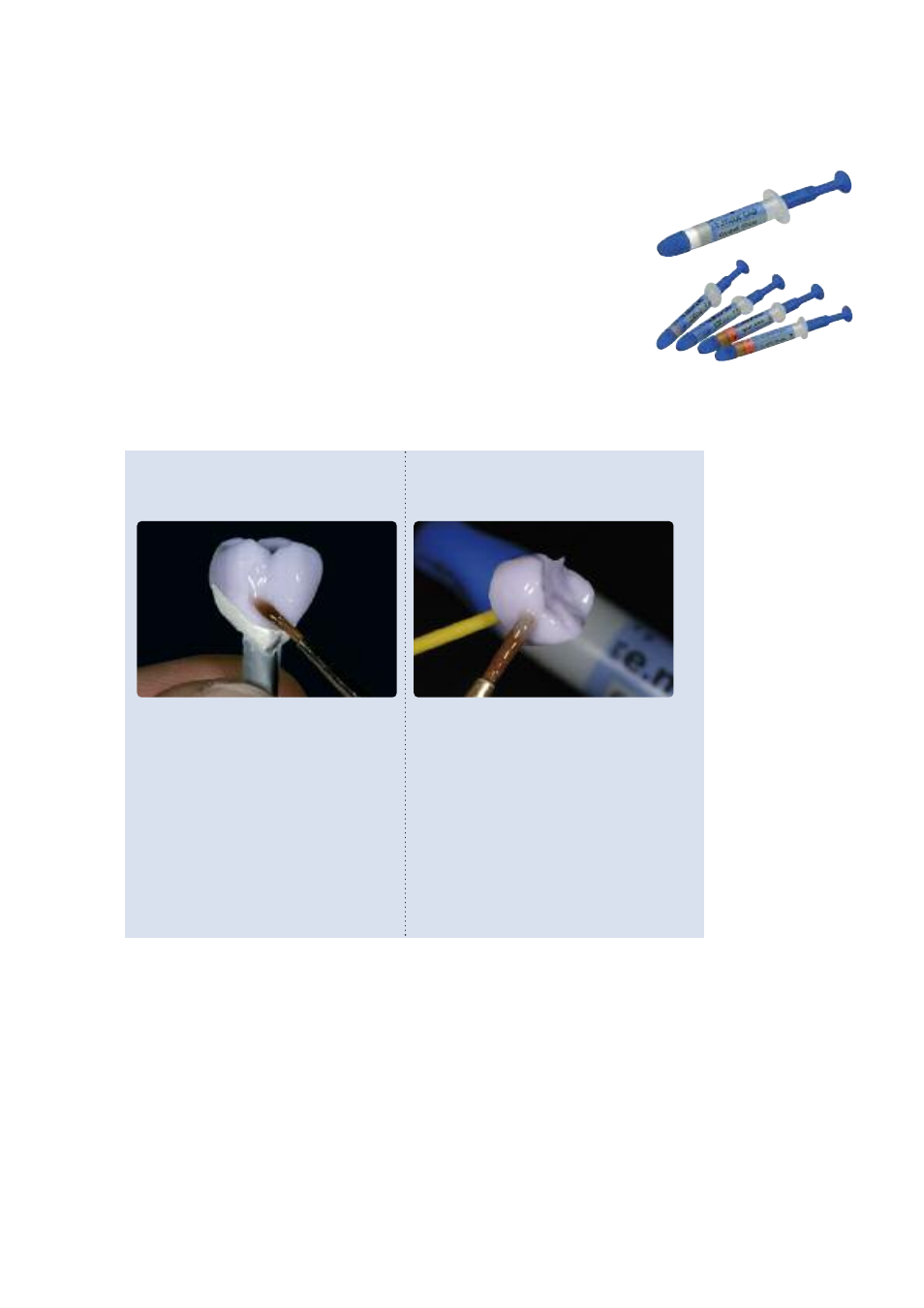Option a – Ivoclar Vivadent IPS e.max CAD Labside User Manual
Page 20

20
with
IPS e.max CAD Crystallization Pin
without
IPS e.max CAD Crystallization Pin
Partial Crown, Anterior Crown,
Posterior Crown
Use either IPS Object Fix Putty or Flow to
secure the restoration on the pin.
Veneer,
Inlay, Onlay
To apply Glaze, Shades and Stains, secure the
restoration
– with an OptraStick,
– with diamond tweezers, or
– directly on the die
Note: the restoration must be placed on a
Crystallization pin with IPS Object Fix Putty or
Flow before firing.
Option A:
Crystallization and Glaze firing in one step with IPS e.max CAD Crystall./Glaze paste
In this processing technique, crystallization and Glaze firing are performed in one step.
Characterizations are applied using IPS e.max CAD Crystall./Shades and Stains.
Preparation for Crystallization and Glaze firing
Depending on the type of restoration, they have to be placed on an IPS e.max CAD Crystallization Pin
before the Stains and Glaze are applied. Smaller restorations (veneers, inlays, onlays) do not need to
be entirely supported.
Either IPS Object Fix Putty or Flow are recommended to secure the restoration on the pin. The
Putty demonstrates a denser consistency and thus higher stability. Given its lower viscosity, Flow is
suitable for smaller restorations.
Observe the following procedure for partial crowns and crowns:
– Select the largest possible IPS e.max CAD Crystallization Pin (S, M, L) that best “fills” the inside of the
restoration, but does not come into contact with the circular crown walls.
– Fill the inside of the restoration with IPS Object Fix Putty or Flow up to the restoration margin.
Immediately reseal the IPS Object Fix Putty/Flow syringe after extruding the material. Once
removed from the aluminium bag, the syringe is ideally stored in a resealable plastic bag or a
container with a humid atmosphere.
– Press the selected IPS e.max CAD Crystallization Pin deeply into the IPS Object Fix Putty or Flow
material so that it is adequately secured.
– Smooth out displaced auxiliary firing paste using a plastic spatula so that the pin is securely in place
and the restoration margins are optimally supported.
– Prevent contamination of the outer restoration surface. Clean off contamination with a brush
dampened with water and dry.
